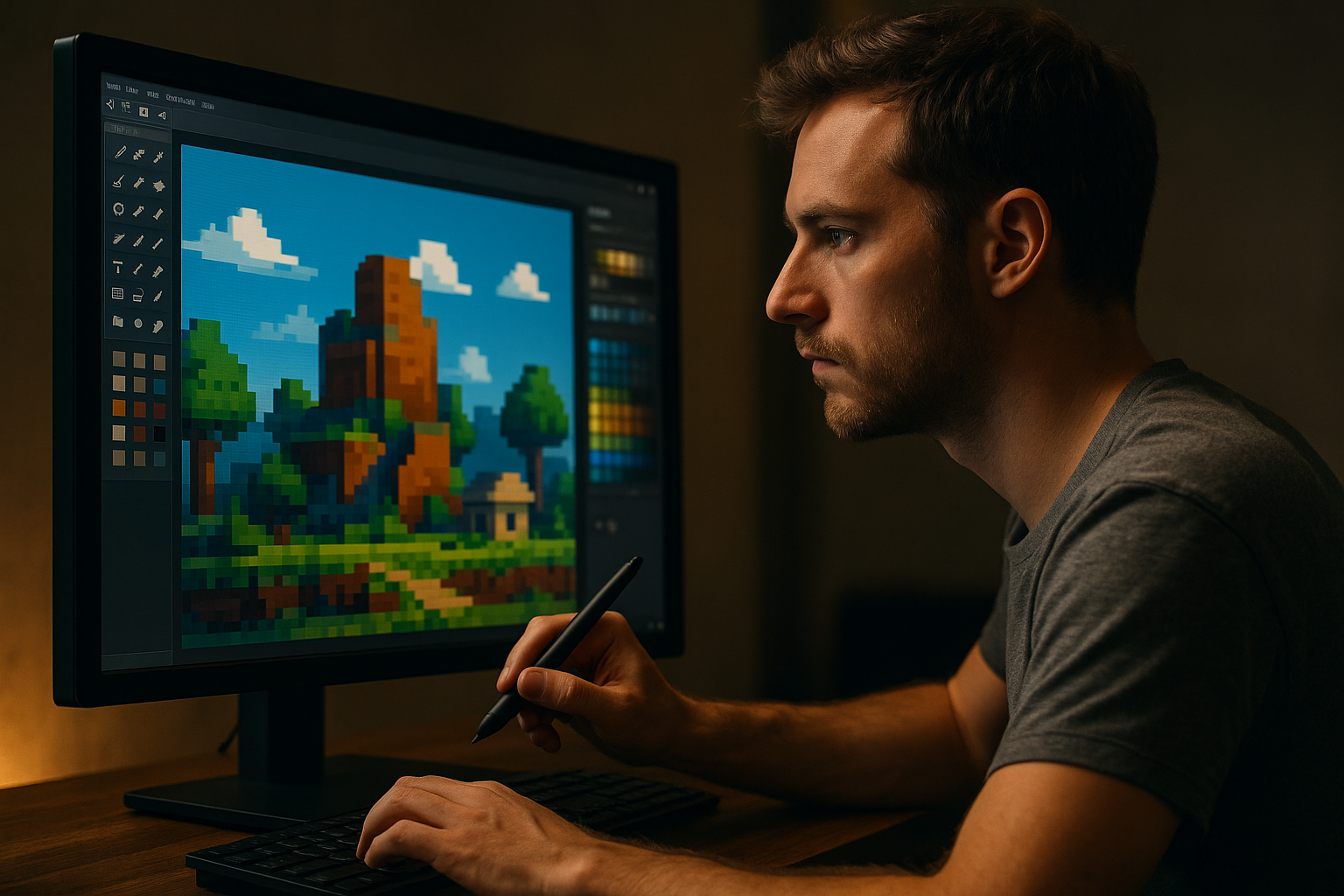Transforming Digital Art: The Intriguing World of Pixel Art
Introduction: Pixel art, a form of digital art that dates back to the early days of computer graphics, is experiencing a renaissance. This resurgence is not merely an instance of nostalgia but a testament to the artistic potential of this medium. Pixel art has its roots in the 1970s, where early computer and video game graphics were driven by the need to fit within the constraints of low-resolution screens and limited memory. This meant that artists had to work with a limited palette of colors and had to meticulously craft each image pixel by pixel. The result was a unique, stylized form of art that became synonymous with the early era of digital technology.

The Pixel Art Renaissance: A Return to Roots
Fast forward to today, and pixel art has seen a resurgence in popularity, despite the advent of more advanced forms of digital art. This revival is not just driven by nostalgia, but by an appreciation for the unique aesthetic and craftsmanship that goes into creating pixel art. More artists are turning to this medium, drawn by its simplicity, accessibility, and the unique challenge it presents.
Pixel Art in the Modern Tech Landscape: Gaming and Beyond
One of the biggest drivers of the pixel art renaissance is the indie gaming industry. Developers are increasingly turning to pixel art for its distinctive style, affordability, and the ability to evoke a sense of nostalgia. But it’s not just the gaming industry that’s fueling the revival. Pixel art is also being used in a variety of other contexts, from digital advertising to website design, proving its versatility and enduring appeal.
The Price Tag of Pixel Art: Affordability and Market Impact
Pixel art’s affordability is a major factor in its resurgence. It requires minimal software, and there are numerous free tools available for those interested in trying their hand at this art form. This has made it a popular choice among indie developers, who often operate on tight budgets. Furthermore, pixel art games have proven successful in the market, with titles like “Minecraft” and “Celeste” achieving critical and commercial success, demonstrating that this art form can be both financially viable and artistically rewarding.
The Future of Pixel Art: A Continuing Legacy
Despite the continual evolution of digital graphics, pixel art shows no signs of disappearing. As long as there are artists willing to embrace its unique challenges and audiences ready to appreciate its distinctive aesthetic, pixel art will continue to thrive. It serves as a reminder that sometimes, limitations can give birth to incredible creativity.
In conclusion, pixel art is more than just a relic from the early days of digital graphics. It’s a testament to the power of simplicity, the beauty of constraint, and the potential for creativity within limitations. And as it continues to make its mark in the modern digital landscape, it’s clear that pixel art is here to stay.




